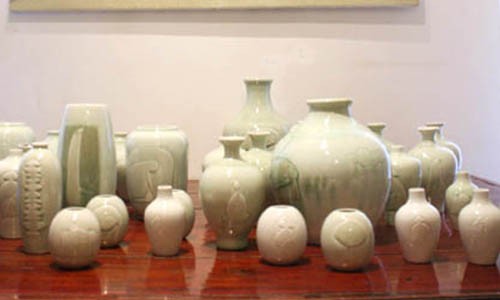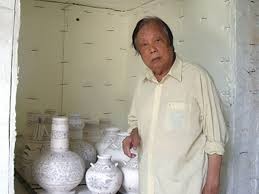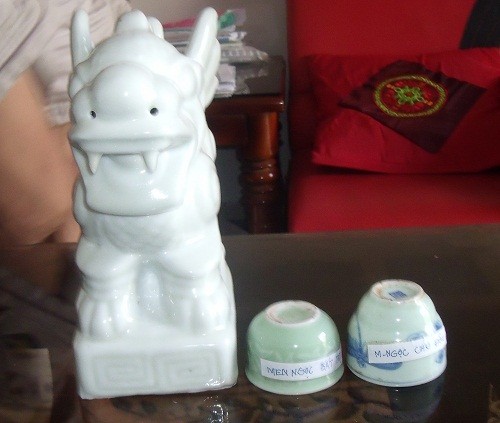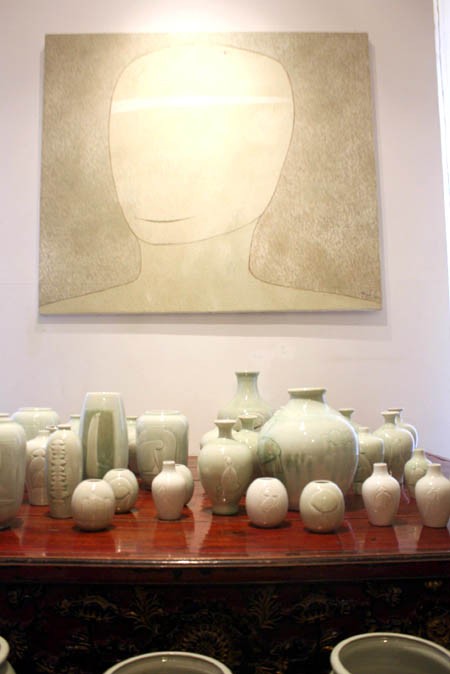(VOVworld) - Artist Nguyen Viet of An Da village on the outskirts of Hanoi has revived the celadon from the Ly dynasty in the 11th century after many years of painstaking research and effort. Bui Thi Hy, a merchant of the 15th century, was believed to be the first person to introduce Vietnamese celadon pottery products of the Ly and Tran dynasties abroad.
 |
75-year-old Nguyen Viet was the first Director of the ballet troupe of the Vietnam National Opera and Ballet Theater. His life-long career spanned ballet, archeology, and pottery. 40 years ago, Viet directed a number of famous ballet performances, one of which won him the Ho Chi Minh award in 2002. However, he gave up ballet to pursue a dream he had been nurturing of reviving an ancient celadon that had long been non-existent. Viet said: “I worked at a pottery kiln when I was 7. I gave up the job at 11 when revolution came to my home village. I then worked as art director for a musical troupe. Pottery-making has been my family’s tradition for hundreds of years and that explains why I turned to this craft in the end.”
 |
Celadon is the most sophisticated and difficult enamel for an artisan to produce. It requires timely and precise firing and ventilating techniques. Viet has put all of his time, wealth, and efforts into pottery-making. He explained that: “It was extremely difficult to find the necessary materials to produce celadon. I’ve had to travel to any place across the country where I could possibly find them.”
 |
Viet began his research in 1979 and found success in 1991. His house is now filled with hundreds of pottery products, whose glaze stands out from any other at home or abroad. Celadon, with its mystical jade green color, is irresistibly attractive to pottery lovers and creating its fragile beauty is a huge challenge to a potter. Viet has succeeded in reviving the 5 colors of Dong Thanh celadon: jade green, coffee, black, rice water, and pickle. Each of these colors has a unique formula using natural materials fired at high temperatures. Viet said: “Each nation has its own distinctive characteristics and so does pottery. This is a unique culture that needs to be brought back to life.”
 |
Viet has put all his love and pride into his products. The more passionate he is about Dong Thanh celadon, the more worried he becomes, said Viet: “I want to contribute as long as I live. I have been able to revive the celadon of the Ly dynasty but there remain those of the Tran, Le, and Mac dynasties. I’m afraid that after I die no one will do this anymore.”
Viet has passed down his passion and knowhow to some young potters. 24-year-old Nguyen Thu said that meeting Viet was a turning point in his life. Viet’s products and his advice quickly mesmerized the young man, who gave up his job and started making pottery. Thanks to Viet’s teaching, Thu has quickly acquired most pottery and celadon production techniques. Thu said: “Viet is a culturist and everything about him is about culture. Peace of mind is crucial in pottery making. People who lack patience will not succeed.”
The Dong Thanh celadon that once was found only in the Brussels Museum has been revived in Vietnam, its homeland. Viet’s success has not only revived a precious cultural value but also highlighted the deftness and dexterity of Vietnamese craftsmen.